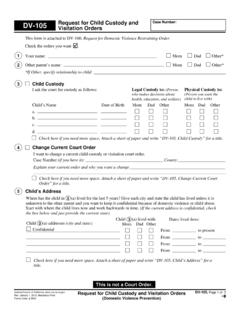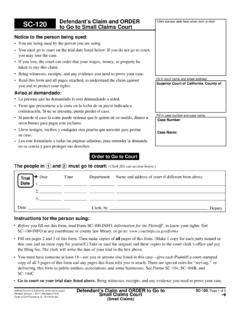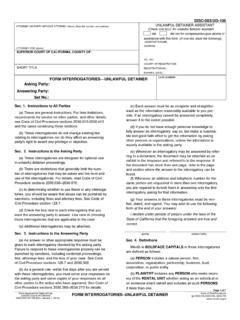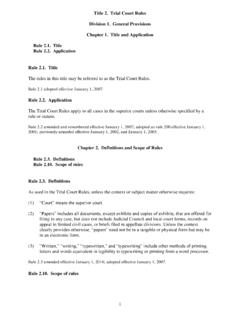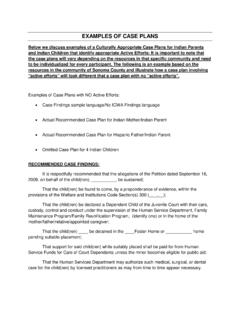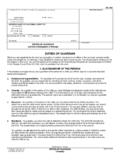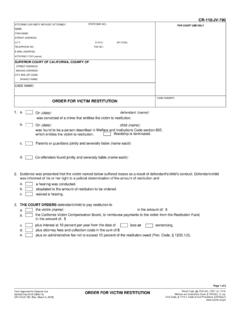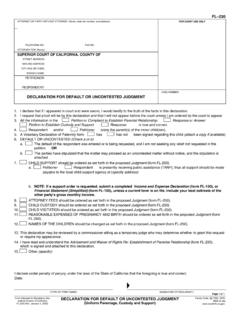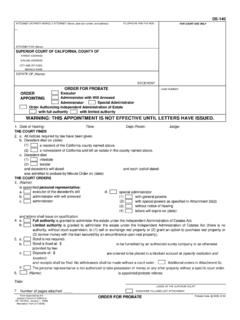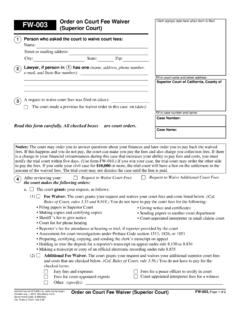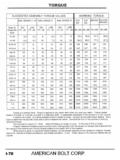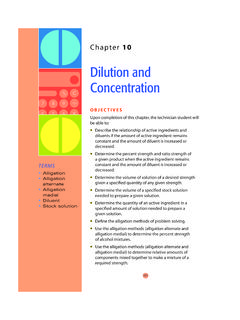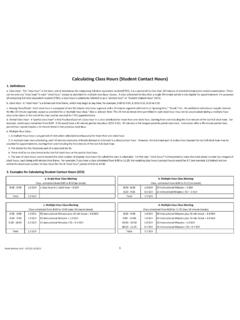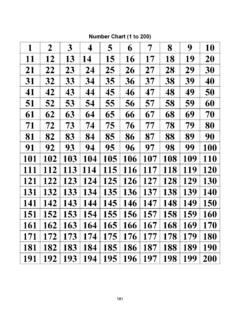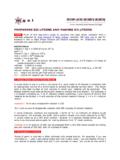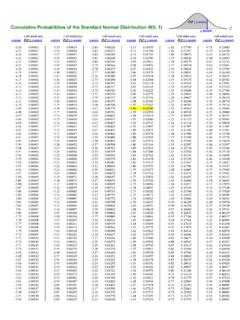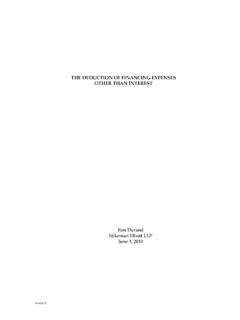Transcription of TITLE 1. Rules Applicable to All Courts
1 TITLE 1. Rules Applicable to All Courts Chapter 1. Preliminary Rules Rule The California Rules of court Rule TITLE Rule Authority Rule Contents of the Rules Rule Construction of Rules and standards Rule Definitions and use of terms Rule The California Rules of court These Rules are entitled the California Rules of court . Rule adopted effective January 1, 2007. Rule TITLE The Rules in this TITLE of the California Rules of court may be referred to as the Rules Applicable to All Courts . Rule adopted effective January 1, 2007. Rule Authority The Rules in the California Rules of court are adopted by the Judicial Council of California under the authority of article VI, section 6, of the Constitution of the State of California, unless otherwise indicated.
2 The Rules in division 5 of TITLE 8 and in TITLE 9 were adopted by the Supreme court . Rule amended effective January 1, 2008; adopted effective January 1, 2007. Rule Contents of the Rules (a) The titles The California Rules of court includes the following titles: (1) TITLE 1. Rules Applicable to All Courts ; (2) TITLE 2. Trial court Rules ; (3) TITLE 3. Civil Rules ; (4) TITLE 4. Criminal Rules ; 2 (5) TITLE 5. Family and Juvenile Rules ; (6) TITLE 6. [Reserved]; (7) TITLE 7. Probate Rules ; (8) TITLE 8. Appellate Rules ; (9) TITLE 9. Rules on Law Practice, Attorneys, and Judges; and (10) TITLE 10. Judicial Administration Rules . (b) Standards of Judicial Administration The California Rules of court includes the Standards of Judicial Administration adopted by the Judicial Council.
3 (c) Ethics Standards for Neutral Arbitrators in Contractual Arbitrations The California Rules of court includes Ethics Standards for Neutral Arbitrators in Contractual Arbitrations adopted by the Judicial Council under the authority of Code of Civil Procedure section (Subd (c) relettered effective January 1, 2008; adopted as subd (d) effective January 1, 2007.) (d) The appendixes The California Rules of court includes the following appendixes: (1) Appendix A. Judicial Council Legal Forms List; (2) Appendix B. Liability Limits of a Parent or Guardian Having Custody and Control of a Minor for the Torts of a Minor; (3) Appendix C. Guidelines for the Operation of Family Law Information Centers and Family Law Facilitator Offices; (4) Appendix D.
4 Judicial Council Governance Policies; (5) Appendix E. Guidelines for Determining Financial Eligibility for County Payment of the Cost of Counsel Appointed by the court in Proceedings Under the Guardianship-Conservatorship Law; (6) Appendix F. Guidelines for the Juvenile Dependency Counsel Collections Program; and 3 (7) Appendix G. Parliamentary Procedures for the Judicial Council of California. (Subd (d) amended effective February 26, 2013; adopted as subd (e) effective January 1, 2007; previously relettered effective January 1, 2008; previously amended effective August 14, 2009, and January 1, 2013.) Rule amended effective February 26, 2013; adopted effective January 1, 2007; previously amended effective January 1, 2008, August 14, 2009, and January 1, 2013.
5 Rule Construction of Rules and standards (a) Construction The Rules and standards of the California Rules of court must be liberally construed to ensure the just and speedy determination of the proceedings that they govern. (b) Terminology As used in the Rules and standards: (1) Must is mandatory; (2) May is permissive; (3) May not means not permitted to; (4) Will expresses a future contingency or predicts action by a court or person in the ordinary course of events, but does not signify a mandatory duty; and (5) Should expresses a preference or a nonbinding recommendation. (c) Standards Standards are guidelines or goals recommended by the Judicial Council.
6 The nonbinding nature of standards is indicated by the use of should in the standards instead of the mandatory must used in the Rules . (d) Construction of additional terms In the Rules : (1) Each tense (past, present, or future) includes the others; (2) Each gender (masculine, feminine, or neuter) includes the others; and (3) Each number (singular or plural) includes the other. 4 Rule adopted effective January 1, 2007. Rule Definitions and use of terms As used in the California Rules of court , unless the context or subject matter otherwise requires: (1) Action includes special proceeding. (2) Case includes action or proceeding. (3) Civil case means a case prosecuted by one party against another for the declaration, enforcement, or protection of a right or the redress or prevention of a wrong.
7 Civil cases include all cases except criminal cases and petitions for habeas corpus. (4) General civil case means all civil cases except probate, guardianship, conservatorship, juvenile, and family law proceedings (including proceedings under divisions 6 9 of the Family Code, Uniform Parentage Act, Domestic Violence Prevention Act, and Uniform Interstate Family Support Act; freedom from parental custody and control proceedings; and adoption proceedings), small claims proceedings, unlawful detainer proceedings, and other civil petitions described in (5). (5) Civil petitions that are not general civil cases include petitions to prevent civil harassment, elder abuse, and workplace violence; petitions for name change; election contest petitions; and petitions for relief from late claims.
8 (6) Unlimited civil cases and limited civil cases are defined in Code of Civil Procedure section 85 et seq. (7) Criminal case means a proceeding by which a party charged with a public offense is accused and prosecuted for the offense. (8) Rule means a rule of the California Rules of court . (9) Local rule means every rule, regulation, order, policy, form, or standard of general application adopted by a court to govern practice and procedure in that court or by a judge of the court to govern practice or procedure in that judge s courtroom. (10) Chief Justice and presiding justice include the Acting Chief Justice and the acting presiding justice, respectively.
9 (11) Presiding judge includes the acting presiding judge or the judicial officer designated by the presiding judge. 5 (12) Judge includes, as Applicable , a judge of the superior court , a commissioner, or a temporary judge. (13) Temporary judge means an active or inactive member of the State Bar of California who, under article VI, section 21 of the California Constitution and these Rules , serves or expects to serve as a judge once, sporadically, or regularly on a part-time basis under a separate court appointment for each period of service or each case heard. (14) Person includes a corporation or other legal entity as well as a natural person. (15) Party is a person appearing in an action.
10 Parties include both self-represented persons and persons represented by an attorney of record. Party, plaintiff, People of the State of California, applicant, petitioner, defendant, respondent, other parent, or any other designation of a party includes the party s attorney of record. (16) Attorney means a member of the State Bar of California. (17) Counsel means an attorney. (18) Sheriff includes marshal. (19) Service means service in the manner prescribed by a statute or rule. (20) Memorandum means a written document containing: a statement of facts; a concise statement of the law, evidence, and arguments relied on; and a discussion of the statutes, cases, Rules , and other legal sources relied on in support of the position advanced.
